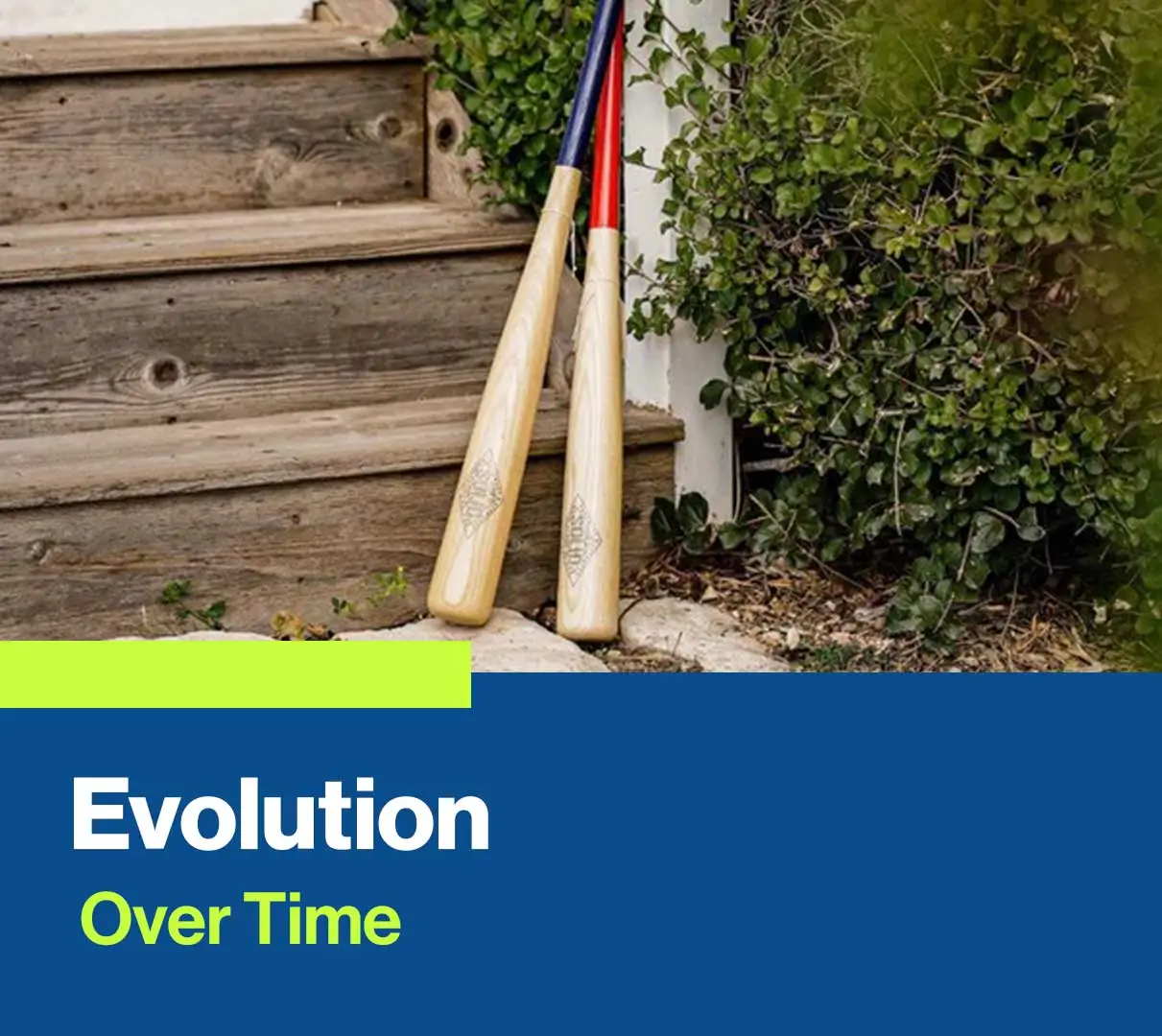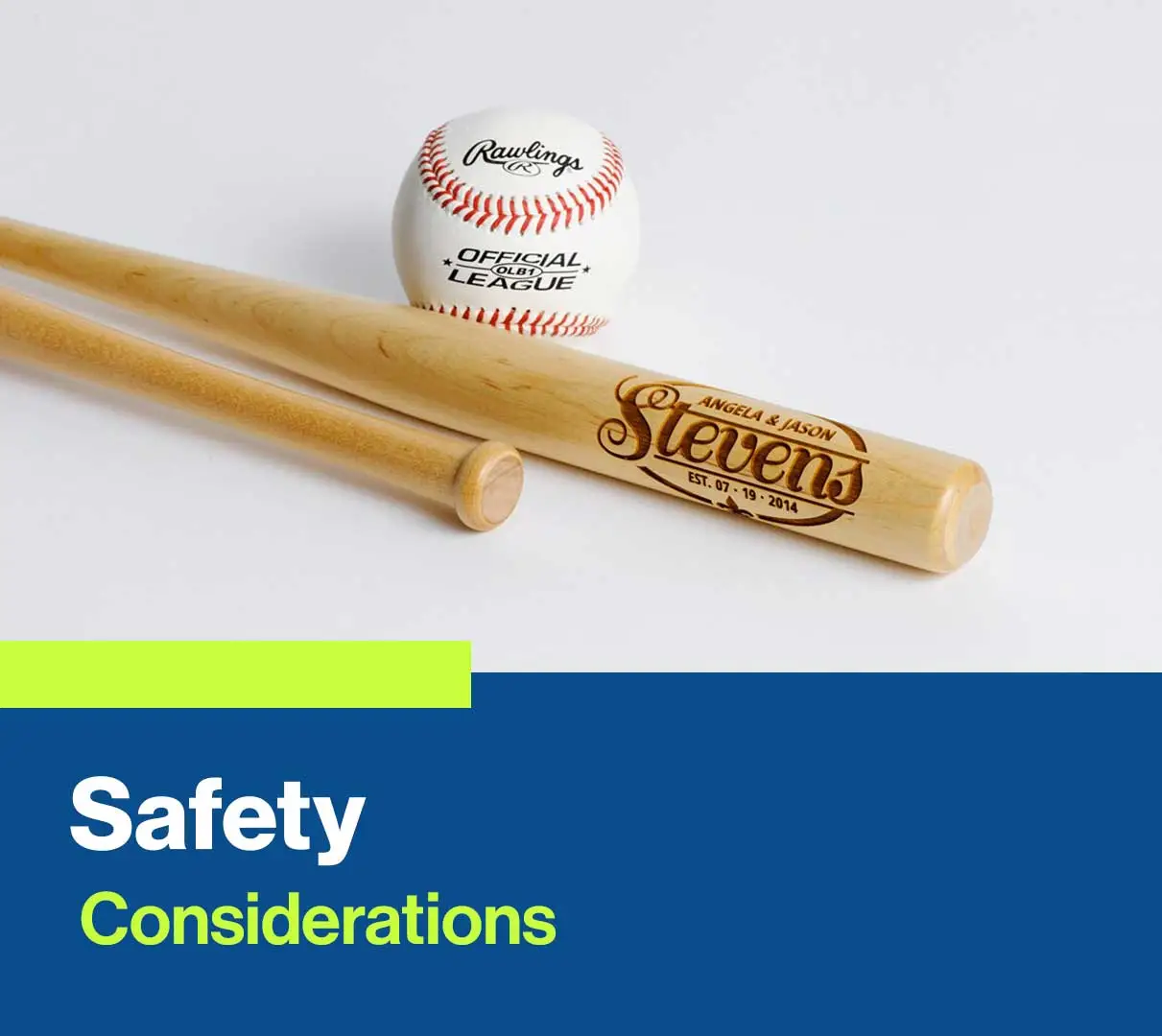Have you ever wondered why Major League Baseball uses wooden bats instead of aluminum or composite alternatives? The choice of wooden bats is steeped in tradition and serves critical purposes that impact both performance and player safety.
In this article, we will explore the reasons behind this iconic decision and its implications for the game.
Table of Contents
ToggleHistory of Wooden Bats
Baseball is a beloved sport with a rich history. One notable aspect is its use of wooden bats. The history of wooden bats in Major League Baseball is fascinating and has deep roots in the game. Let’s explore the journey from the early days to the present.
Early Adoption
Wooden bats were the first bats used in baseball. In the mid-1800s, players crafted their own bats. These early bats varied in shape and size. There were no regulations back then. Players used any type of wood they found. Key points from the early adoption of wooden bats:
- Handmade by players: In the 1800s, players made their own bats.
- Variety in design: No standard shapes or sizes existed.
- Wood types: Players used different types of wood, like ash and hickory.
By the late 1800s, bat manufacturers started to emerge. They began standardizing bat designs. John Hillerich, a young woodworker, crafted the first Louisville Slugger bat in 1884. This bat became a favorite among players. Table of Early Bat Characteristics:
| Characteristic | Description |
|---|---|
| Material | Various woods (ash, hickory) |
| Length | Varied, no standard |
| Shape | Custom-made, diverse shapes |
Evolution Over Time
Over the years, the design and material of wooden bats evolved. The early 1900s saw the rise of ash wood as the preferred material. Ash was light and durable, making it ideal for bats. In the 1940s, hickory lost favor due to its weight. Important milestones in the evolution of wooden bats:
- Introduction of standard sizes: Bat manufacturers began to create standard sizes in the early 1900s.
- Adoption of ash wood: Ash became the primary wood used for bats.
- Rise of the Louisville Slugger: This brand became synonymous with quality bats.
In the late 20th century, maple wood emerged as a popular choice. Maple bats gained fame after Barry Bonds used one in his record-breaking season. Maple is denser than ash, giving it a different feel and performance. Comparison of Ash and Maple Bats:
| Wood Type | Characteristics |
|---|---|
| Ash | Light, flexible, traditional |
| Maple | Dense, strong, modern |
Today, Major League Baseball uses only wooden bats. This tradition preserves the game’s history and integrity. Wooden bats provide a unique challenge for players, making the game more exciting.
Performance Factors
Major League Baseball (MLB) uses wooden bats for various reasons, but performance factors are the most critical. These factors ensure the game remains challenging and exciting. Let’s explore the key performance elements that make wooden bats essential in MLB.
Bat Speed And Control
Wooden bats offer superior bat speed and control compared to metal bats. Players need to have a high level of skill to swing wooden bats effectively. This helps in maintaining the quality of the game. With wooden bats:
- Players have better control over their swings.
- Precision hitting becomes crucial, adding to the excitement.
- Bat speed remains consistent, ensuring fair play.
Wooden bats are heavier than metal bats. This weight difference means players must have strong wrists and arms. The weight also forces players to rely on proper technique rather than sheer power. Here’s a comparison table:
| Aspect | Wooden Bats | Metal Bats |
|---|---|---|
| Weight | Heavier | Lighter |
| Control | Better | Less precise |
| Durability | Less durable | More durable |
Overall, the emphasis on control and precision makes wooden bats a perfect choice for MLB. Players need to be skilled and strategic, making the game more engaging for fans.
Impact On Gameplay
Wooden bats significantly impact the gameplay in MLB. They create a level playing field for all players. Here are some key impacts:
- Reduced home runs: Wooden bats do not hit the ball as far as metal bats.
- More strategic plays: Players focus on hitting line drives and ground balls.
- Increased skill requirement: Players must hone their techniques.
These factors lead to a more competitive and exciting game. Wooden bats ensure that players’ skills are the main focus. This aspect makes the game fairer and more enjoyable for spectators.
The unpredictability of hits with wooden bats keeps fans on the edge of their seats. Here’s a quick look at how wooden bats affect gameplay:
| Gameplay Aspect | Wooden Bats |
|---|---|
| Home Runs | Fewer |
| Strategic Hitting | More important |
| Player Skill | Highly emphasized |
In essence, wooden bats make MLB games more thrilling by emphasizing skill over power. This focus on performance factors ensures that every game is a display of true baseball talent.
Safety Considerations
Wooden bats have been a staple in Major League Baseball (MLB) for decades. They offer a traditional feel and performance that aluminum or composite bats cannot replicate. One of the primary reasons for using wooden bats in MLB is the safety considerations for both players and fans.
Wooden bats break differently than metal bats, reducing the risk of injuries from high-speed projectiles. This blog post will explore why wooden bats are crucial for safety in MLB.
Injury Prevention
Injury prevention is a significant reason why MLB mandates the use of wooden bats. Wooden bats tend to break into larger, more predictable pieces. In contrast, metal bats can shatter into sharp fragments, posing a higher risk. Here are some key points for injury prevention:
- Wooden bats break in a safer manner, usually splitting lengthwise.
- Metal bats can burst into small, sharp pieces, which can injure players and umpires.
- Wooden bats have a higher moment of inertia, making them more challenging to swing and reducing the force of impact.
- This reduces the speed of the ball after contact, minimizing injury risk.
Let’s compare wooden and metal bats in terms of safety:
| Feature | Wooden Bats | Metal Bats |
|---|---|---|
| Breaking Pattern | Splits lengthwise | Shatters into fragments |
| Impact Force | Lower | Higher |
| Projectile Speed | Lower | Higher |
Using wooden bats helps to keep players and umpires safer on the field. The lower risk of sharp fragments and reduced projectile speed are vital for injury prevention.
Fan Safety
Fan safety is another crucial factor in MLB’s preference for wooden bats. Wooden bats produce fewer high-speed projectiles that can reach the stands. This is vital for protecting spectators from injuries. Consider these points for fan safety:
- Wooden bats have less trampoline effect, resulting in slower balls.
- Metal bats can send balls flying faster, increasing the risk to fans.
- Wooden bats break into larger, less dangerous pieces.
- These pieces are less likely to reach the stands.
To illustrate the differences:
| Feature | Wooden Bats | Metal Bats |
|---|---|---|
| Projectile Speed | Lower | Higher |
| Breaking Pattern | Predictable pieces | Unpredictable fragments |
| Risk to Fans | Lower | Higher |
Fan safety is a top priority for MLB. The controlled breaking pattern of wooden bats and their reduced projectile speed make them the safer choice for professional play.
Regulations And Standards
Major League Baseball (MLB) has a rich history, and its regulations and standards are crucial. One key aspect is the use of wooden bats. Understanding why MLB sticks to wooden bats involves diving into the official rules and material requirements.
Major League Baseball uses wooden bats to maintain the traditional integrity of the game and to ensure player safety. Wooden bats reduce the risk of injuries from high-speed hits.
Official Rules
MLB’s official rules mandate the use of wooden bats. These rules ensure the game remains fair and traditional. The rules specify the bat’s dimensions and characteristics:
- Length: The bat must not exceed 42 inches.
- Diameter: The bat’s diameter cannot be more than 2.61 inches at its thickest part.
The rules also state that the bat must be a single piece of wood. This keeps the game consistent and predictable. Players cannot use metal or composite bats. Wooden bats change how the ball is hit, adding to the game’s charm. They break more easily than metal bats, which affects game strategy and safety. Here is a quick table summarizing the official rules:
| Specification | Requirement |
|---|---|
| Length | Not more than 42 inches |
| Diameter | Not more than 2.61 inches |
| Material | Single piece of wood |
These strict rules preserve baseball’s heritage and ensure every player competes under the same conditions.
Material Requirements
MLB’s material requirements for bats are just as strict as the official rules. The bat must be made from a solid piece of wood. The most common woods used are:
- Ash: Known for its flexibility and light weight.
- Maple: Famous for its density and durability.
- Birch: Offers a mix of flexibility and strength.
Each type of wood affects the bat’s performance. Ash bats have a larger sweet spot but break more easily. Maple bats are more durable but can feel heavier. Birch bats balance flexibility and strength. The wood used must be free from defects. Knots, cracks, and other imperfections are not allowed.
This ensures the bat performs well and safely. The wood must also be properly dried and seasoned. Moisture content affects how the bat behaves during a game.
These material requirements help maintain the quality and safety of the game. They ensure every bat used in MLB is up to standard, providing a fair playing field for all players.
Tradition and Culture
Baseball is more than a game; it’s a rich tapestry woven with tradition and culture. One of the enduring aspects of Major League Baseball (MLB) is the use of wooden bats.
This practice isn’t just about the rules of the game; it’s a nod to its deep-rooted history and the values that have shaped it. Using wooden bats preserves the essence of baseball, connecting today’s players with the legends of the past.
Symbol Of The Game
Wooden bats are a symbol of the game. They represent the authentic spirit of baseball. The sound of a wooden bat hitting a ball is iconic. It’s a sound that resonates with fans and players alike. Several reasons contribute to the wooden bat’s symbolic status:
- Historical Significance: Wooden bats have been used since the inception of baseball.
- Consistency: They offer a consistent experience, unlike aluminum or composite bats.
- Skill Requirement: Hitting with a wooden bat requires more skill, making the game more challenging.
Wooden bats also maintain the integrity of the game. They ensure that players rely on their skill rather than technology. This keeps the game fair and competitive.
| Wooden Bats | Aluminum Bats |
|---|---|
| Tradition | Modernization |
| Skill-based | Power-based |
| Consistent | Variable |
Using wooden bats also keeps the game’s history alive. It connects current players with those who played before them, creating a sense of continuity and respect for the game’s past.
Player Preferences
Players also have their preferences when it comes to bats. Many MLB players prefer wooden bats for several reasons:
- Feel: Wooden bats offer a unique feel that many players find superior.
- Balance: The balance of a wooden bat is different, often preferred for its natural weight distribution.
- Feedback: Wooden bats provide better feedback on hits, helping players improve their technique.
Many players grow up using aluminum bats in youth leagues. Transitioning to wooden bats in the MLB can be challenging but ultimately rewarding. Wooden bats are less forgiving, which helps players refine their skills. In MLB, the choice of bat can influence a player’s performance:
- Improved focus on technique
- Better understanding of swing mechanics
- Enhanced hand-eye coordination
Players often stick to wooden bats because they embrace the challenge. The use of these bats makes their achievements even more significant. They know that mastering a wooden bat is part of becoming a true baseball legend.
Wooden bats also bring a sense of tradition to every game. Players understand that they are part of a long line of athletes who have played the game the same way.
Economic Aspects
Major League Baseball (MLB) players use wooden bats for several economic reasons. The costs involved and the market demand for wooden bats play significant roles. Let’s explore these aspects in detail.
Cost of Production
Producing wooden bats involves several steps and materials. Each bat must meet strict MLB standards. These standards ensure quality and performance. Wooden bats are usually made from ash, maple, or birch. These woods are chosen for their strength and flexibility.
The cost of wood varies based on type and quality. High-quality wood is more expensive. The production process includes:
- Harvesting the wood
- Drying and curing the wood
- Shaping the bat
- Finishing and inspecting the bat
Each step requires skilled labor. Skilled labor increases production costs. The table below shows a comparison of cost factors for wooden and metal bats.
| Cost Factor | Wooden Bats | Metal Bats |
|---|---|---|
| Raw Material | High | Medium |
| Labor | High | Low |
| Production Time | Long | Short |
Overall, wooden bats are more costly to produce. This cost affects their market price and availability.
Market Demand
Market demand for wooden bats remains strong. MLB and other leagues prefer wooden bats for several reasons. This preference drives demand. Some key reasons include:
- Tradition: Wooden bats have been used for over a century.
- Performance: Wooden bats provide better feedback to players.
- Safety: Wooden bats are less likely to cause injuries compared to metal bats.
Fans and collectors also contribute to the demand. Many fans buy wooden bats as memorabilia. Collectors seek out bats used by famous players. The demand for wooden bats keeps their prices high. Even with higher production costs, manufacturers can sell wooden bats at premium prices.
This balance between cost and demand maintains the economic viability of wooden bats in MLB. Overall, the market demand for wooden bats is robust. This demand supports their continued use in Major League Baseball.
Environmental Impact
Major League Baseball (MLB) has always used wooden bats. One crucial reason is the environmental impact. Wooden bats offer various environmental benefits that metal or composite bats cannot match. Let’s explore the sustainability issues and wood sourcing practices that make wooden bats the preferred choice.
Sustainability Issues
Wooden bats are environmentally friendly compared to metal bats. Metal bats require mining and smelting, which consume significant energy and resources. Wooden bats, on the other hand, come from trees that absorb carbon dioxide and release oxygen. This process helps combat climate change. Here are some key sustainability issues:
- Renewable Resource: Trees are a renewable resource. With proper forest management, trees can be replanted to replace those used for bats.
- Biodegradable: Wooden bats are biodegradable. They break down naturally, unlike metal bats, which can take hundreds of years to decompose.
- Lower Carbon Footprint: Manufacturing wooden bats generates a lower carbon footprint. The process involves less energy and fewer emissions.
Using wooden bats aligns with global sustainability goals. It reduces the reliance on non-renewable resources and supports Eco-friendly practices.
Wood Sourcing Practices
MLB ensures that the wood for bats comes from sustainable sources. The main types of wood used are ash, maple, and birch. These trees are selected for their strength and flexibility. Here are some practices followed:
- Forest Stewardship Council (FSC) Certification: Many bat manufacturers use FSC-certified wood. This certification ensures that the wood comes from responsibly managed forests.
- Selective Harvesting: Trees are selected based on age and size. This practice minimizes the impact on the forest ecosystem.
- Replanting Programs: For every tree cut down, new trees are planted. This ensures a continuous supply of wood and maintains forest health.
| Type of Wood | Characteristics |
|---|---|
| Ash | Flexible and strong, absorbs shock well |
| Maple | Dense and hard, offers more power |
| Birch | Combination of ash and maple qualities, balanced performance |
These wood sourcing practices ensure that bat production does not harm the environment. They also guarantee that the forests will continue to provide high-quality wood for future generations.
Future of Bats
Major League Baseball (MLB) uses wooden bats due to tradition and safety. Yet, the future of bats is an exciting topic. Innovations and trends are transforming how players and fans experience the game. Let’s explore these advancements and what they mean for baseball’s future.
Technological Innovations
Technological advances are changing how bats are made. Engineers and scientists are always testing new materials. They want to make bats that are stronger and lighter. Here are some new materials being tested for baseball bats:
- Composite Wood: Mixes different types of wood for strength and flexibility.
- Metal-wood Hybrids: Combines metal and wood for better performance.
- Carbon Fiber: Very light and strong, used in many sports equipment.
These materials can make bats last longer. They can also help players hit the ball farther. Better bats can make the game more exciting for fans. New designs also help reduce injuries. Engineers use computers to design safer bats. Safety is important for players at all levels. Here is a comparison table of traditional wood vs. new materials:
| Material | Weight | Durability | Safety |
|---|---|---|---|
| Traditional Wood | Heavy | Breaks Easily | Moderate |
| Composite Wood | Moderate | High | High |
| Metal-wood Hybrids | Light | Very High | Very High |
| Carbon Fiber | Very Light | Extremely High | Very High |
Changing Trends
Trends in baseball are always changing. Players’ preferences and league rules affect bat choices. Wooden bats have been the standard for years. Yet, younger players prefer lighter bats. Here are some trends influencing the future of bats:
- Younger Players: Prefer lighter and more durable bats.
- Safety Concerns: Demand for safer bats is increasing.
- Environmental Impact: Eco-friendly materials are becoming popular.
Eco-friendly bats are also trending. Many companies are focusing on sustainable materials. Bamboo bats are an example. They are strong and environmentally friendly. This is important for the future of our planet. League rules also play a role. MLB rules require wooden bats. But, other leagues allow new materials.
This could lead to changes in MLB rules. Fans and players may push for these changes. Changing trends show that the future of bats is bright. Innovations and preferences will shape the game. It will be exciting to see what comes next.
FAQ: Why Does Major League Baseball Use Wooden Bats?
1. Why does MLB require wooden bats instead of metal?
Wooden bats are mandated for player safety (lower ball exit speeds) and tradition, maintaining the skill challenge of hitting with less forgiving lumber.
2. How do wooden bats affect game performance?
They reduce “trampoline effect” (unlike aluminum), keeping exit velocities below 100 mph on average and rewarding pure hitting technique over bat technology.
3. What type of wood do MLB bats use?
90% are northern white ash or maple, chosen for density and durability. All bats must meet MLB’s strict wood quality standards.
4. Have there ever been exceptions to the wood rule?
No. Since 1893, MLB has banned metal/composite bats to preserve the game’s integrity. Even experimental hybrids require special approval.
5. Could aluminum bats work in MLB?
Testing shows aluminum would boost hits to dangerous speeds (+10-15 mph exit velo), increasing injury risks and altering the game’s balance.
Conclusion
In summary, understanding Why Does Major League Baseball Use Wooden Bats is essential for appreciating the sport’s rich traditions and the unique dynamics of game play. The choice of wooden bats not only enhances the authenticity of the game but also contributes to the development of players’ skills and ensures a fair competition.
The durability, performance, and safety factors associated with wooden bats make them a staple in Major League Baseball. As fans and players continue to embrace this time-honored practice, the question of Why Does Major League Baseball Use Wooden Bats remains a testament to the sport’s commitment to quality and tradition.
Source: Bat Digest | MLB.com | Wikipedia – “Baseball Bat”

– the man behind this blog, is a passionate former baseball player. With a deep love for the sport, he shares insightful baseball-related blogs, reviews, information and much more. Get ready to enhance your baseball knowledge and elevate your game with Henry’s expertise. Join him on this journey!





